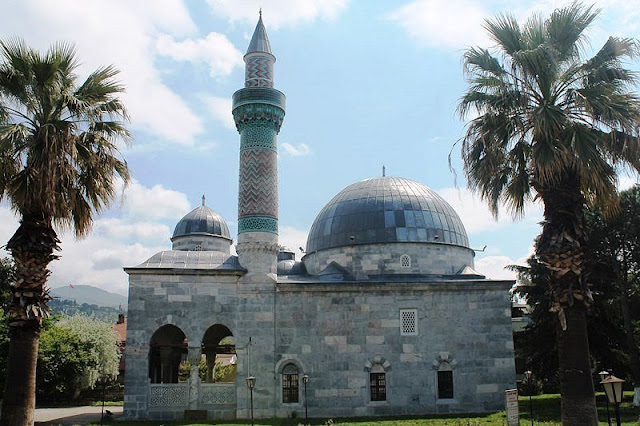Green Mosque Bursa – History, Location & Key Facts
The Yesil district of the city of Bursa is home to
the Green Mosque of Bursa. The Turkish word for "green" is
"yesil." Given that the area is called for the buildings surrounding
the Green Mosque, it is a well-deserved name. The Green Mosque is situated in
the centre of Kulliye, a complex that houses several facilities. There are
mosques, soup kitchens, royal burial grounds, schools, and libraries inside the
Kulliye complexes. Nearly all significant Turkish settlements from Central Asia
to Europe can be found with them. In 1326, Bursa was chosen as the Ottoman
Empire's capital. 39 years after Edirne was selected as the Ottoman capital,
Bursa was still the site of the palace's splendid constructions.
Apply for a turkey visa online and plan
your trip to explore the Green Mosque right away!
The Kulliye of Green Mosque includes a Turkish spa,
a madrasah, and royal tombs. According to an inscription found inside the
mosque, the building of the mosque was completed in 1419. In 1424, the
beautiful tile worked, and the challenging pen work was finished. The Green
Mosque was built under I Mehmet's orders. Unfortunately, he died in 1421 before
seeing the project's completion. His son II Murad completed the mosque and
constructed the Green Tomb across from it as a Royal Tomb for his father and
his family. Because of its incredible tile work, Green Tomb deserves another
blog post, which you may read now.
By Haci Ivaz Pasha, the Green Mosque of Bursa was
constructed. He fought with I Mehmet while serving as a commander in the Ottoman
Army. The most notable artist of Turkish Islamic architecture in the 15th
century, Nakkas Ali, created remarkable pen work in the domes and the tiles
that decorate the walls. He oversaw a team of artists from Tebriz, a crucial
Iranian city for the arts. They are called Masters of Tebriz in a Persian
inscription found on the mosque altar. Due to the invasions of Tamerlane and
his successors in the 14th and 15th centuries, many intellectuals and artists
fled Iran.
A court and a government building were both housed
at the Green Mosque. The building has an extension in the south and an inverted
T-plan. Before the main prayer hall, an anteroom is reachable via a flight of
stairs. Two openings may be found in the East and West of this significant
hall, which stretches from north to south. An octagonal pool sustains the
mosque's central dome. The domes have a 25-meter height and a 13-meter width.
The marble was carried from Marmara Island in the Sea of Marmara, where a mine
is still operating. The Green Mosque is the first marble Ottoman building in
Bursa. Mecnun Mehmet made the remarkable tiles in the Green Mosque. The
mosque's 10-metre high, 6.5-metre broad altar features the best tiles. In some
instances, the mosque's interior woodwork is older than the 20th century. The
1855 earthquake struck the ancient minarets to fall. They are considered
covered in green tiles, which gave the mosque its well-deserved name. The
modern-day minarets were added in the latter part of the 19th century. You can
see the Green Tomb, the two hands, and the Museum of Turkish and Islamic arts
today, all of which are situated at the Green Mosque Kulliye.
We have personally dispatched more than 1
million turkey
e-visas because we want you to enjoy your trip
there and make it memorable.






Comments
Post a Comment